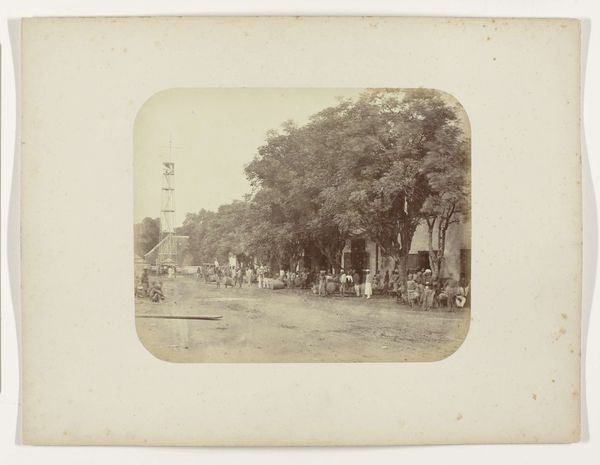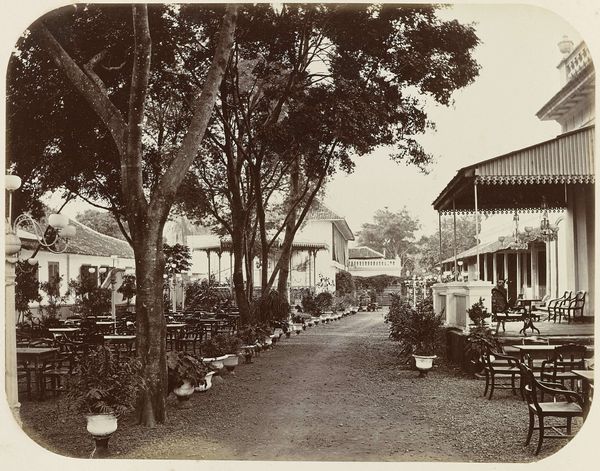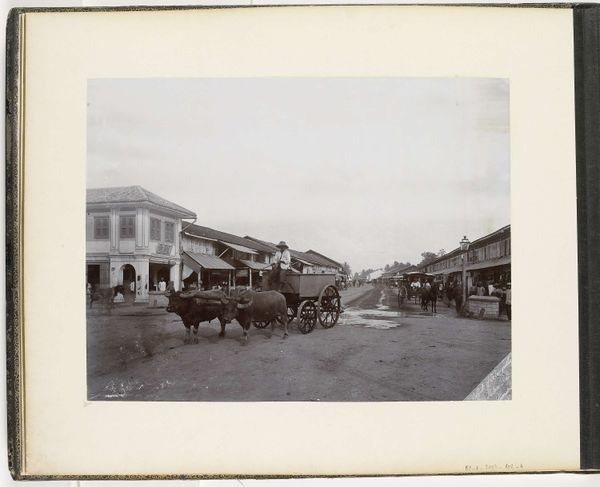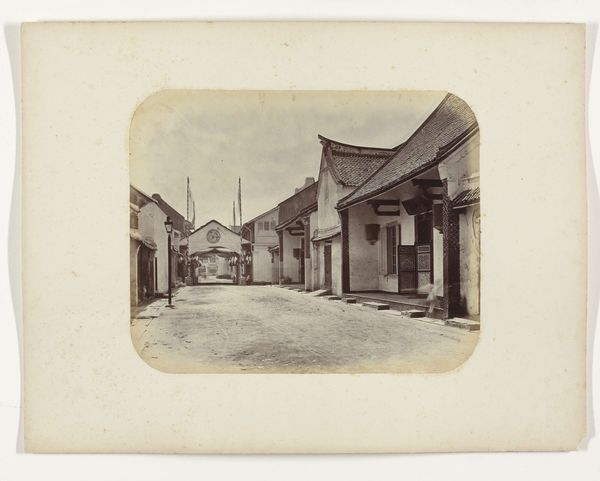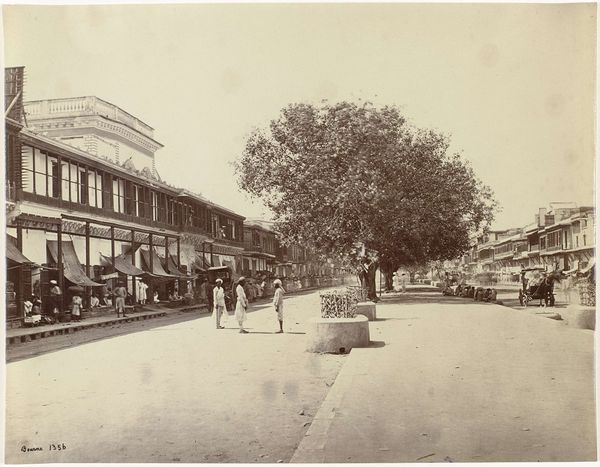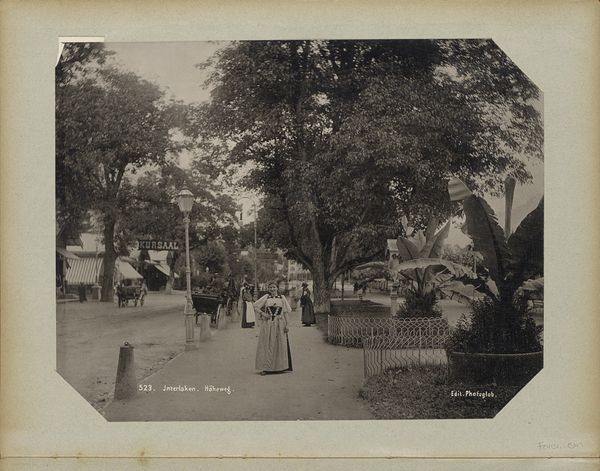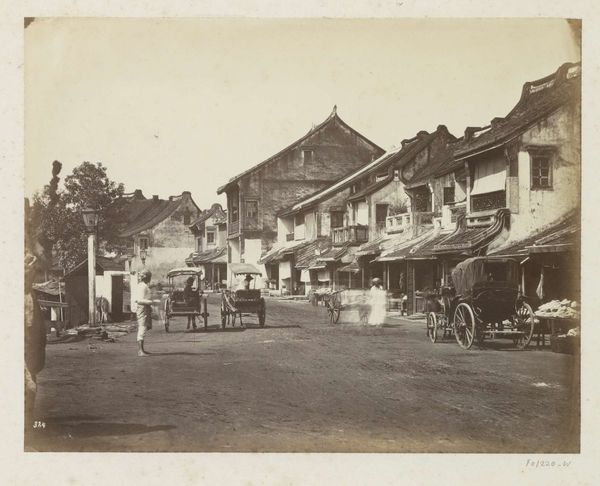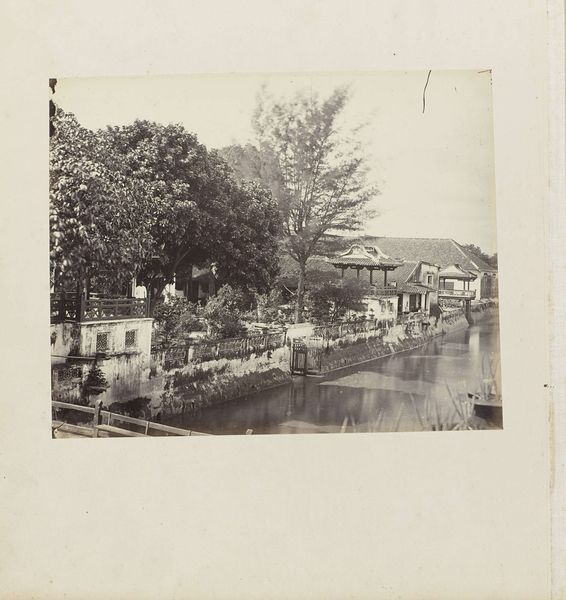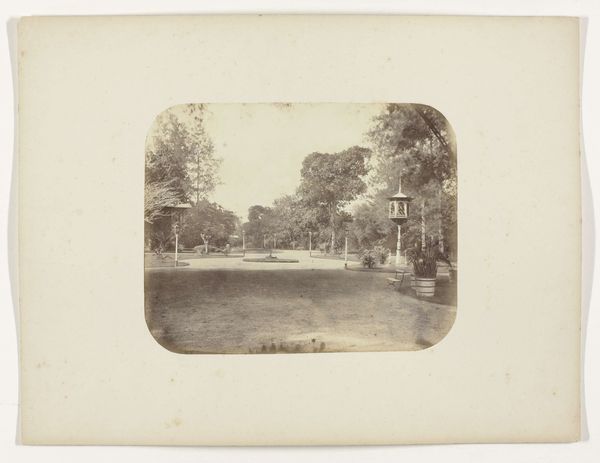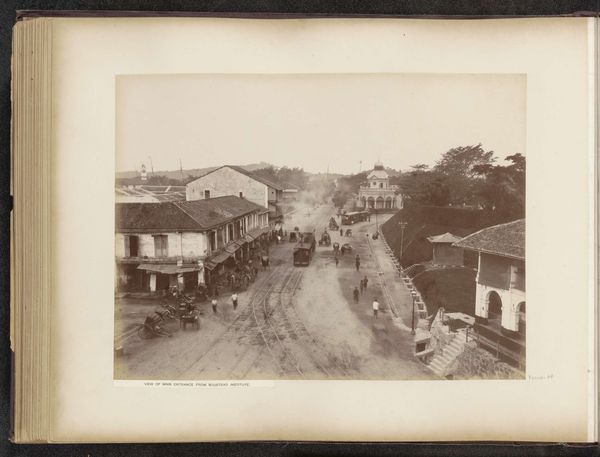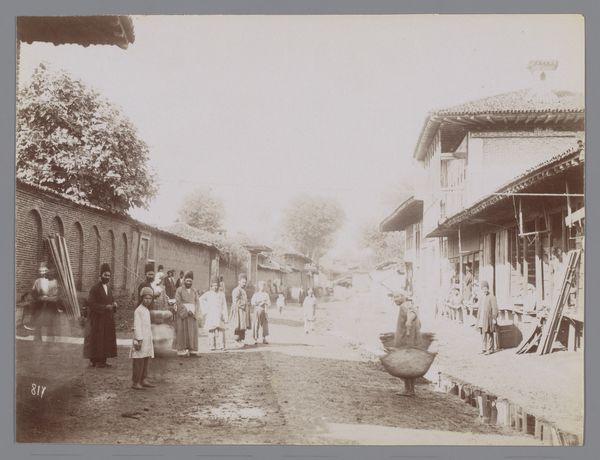
daguerreotype, photography
#
daguerreotype
#
street-photography
#
photography
#
orientalism
#
cityscape
Dimensions: height 85 mm, height 52 mm
Copyright: Rijks Museum: Open Domain
Curator: Before us is a daguerreotype, a photograph titled "Street View of North Bridge Road in Singapore" dating from the late 1860s to 1880, made by G.R. Lambert & Co. which resides in the Rijksmuseum collection. What are your first impressions? Editor: The first thing that strikes me is how... empty it feels, despite supposedly depicting a bustling street scene. There's a sense of stillness, a world caught between moments, or maybe the colonial gaze being fixed upon the streets of Singapore. Curator: The long exposure time of early photography definitely contributes to that effect. Notice how only a few figures are sharply defined; others appear as ghostly blurs, a kind of pre-digital impressionism achieved through technical constraint. The formal elements of the photograph work to highlight the details of the streetscape – the structures and built environment. Editor: I find myself dwelling on those sharp details. "Prince of Wales Tavern," declares one sign – a blatant marker of colonial presence and influence. The carefully composed image, focusing on the details of a rapidly modernizing cityscape, serves as a potent reminder of cultural exchange. What are we *not* seeing, or not meant to see? Curator: That colonial dimension is key. This image speaks to a fascination with the ‘exotic’ East, popular at the time. Yet the structure provides symmetry and ordered geometry. Focus on the planes receding, creating a calculated sense of depth and the stark contrast illuminating each column’s deliberate placement. Editor: True, but it's precisely that seemingly objective 'order' that concerns me. It feels like an assertion of control, a way of cataloging and claiming space, people, and culture through the lens of the colonizer. What does it mean to capture and display Singapore in this way? It makes me consider whose narrative is being framed and consumed by museum audiences then and now. Curator: That’s a necessary provocation. Yet as a historical document, the technical skill involved should not be overlooked, even if this does also tell a complicated socio-political story of encounter and perception. Editor: Absolutely. These aesthetic choices were inevitably infused with power dynamics and cultural biases. They’re a crucial facet in our interpretation. The history we are now studying can now be seen with some context to consider how they made their artistic decisions during those complex periods.
Comments
No comments
Be the first to comment and join the conversation on the ultimate creative platform.
